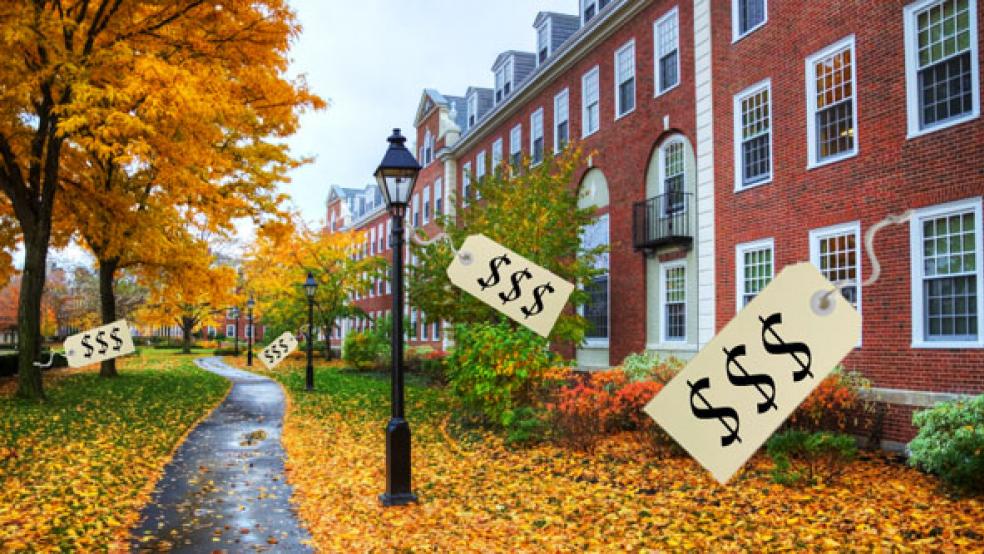
Colleges and the government have been offering students financial assistance for years. Financial aid is a worthwhile concept, especially with college tuition continually increasing.
But if you think that it's all working as intended, think again. There is growing evidence that colleges are offering more scholarship money to affluent students and less to those truly in need.
A new study by Sallie Mae found that 36 percent of students from high-income families (with annual income of $100,000 or more) received scholarships averaging $10,213 for the school year just ended, while 35 percent of those from low-income families (earning less than $35,000 a year) received scholarships worth an average of $7,237.
A study released in May by the New America Foundation analyzed federal data on students out-of- pocket payments for school. It found that the share of those receiving merit aid at public colleges had more than doubled, from 8 percent to 18 percent, between the 1995-96 and 2007-08 academic years. The share at private colleges rose from 24 percent to 44 percent in the same period.
At all colleges, however, the share of students receiving need-based aid barely changed. "With their relentless pursuit of prestige and revenue, the nation's public and private four-year colleges and universities are in danger of shutting down what has long been a pathway to the middle class," wrote Stephen Burd, author of the New America study.
RELATED: 10 SMART WAYS TO CUT COLLEGE COSTS
What's going on? For starters, colleges are in a perpetual race to rise in published rankings. Second-tier schools use offers of aid to lure highly qualified students, even if those students don't need the help.
Others appear to actively direct the aid to well-heeled students, according to the New America study. It found that "10 percent of college admissions directors at four-year colleges (and nearly 20 percent of those at private liberal arts colleges) reported that they give affluent students a significant leg up in the admissions process."
Grants and scholarships covered 37 percent of low-income students' college costs in the 2012-13 school year, down from 42 percent in 2008-09, according to Sallie Mae. Such aid covered more of middle-income students costs, and wealthy students' use of merit aid was essentially unchanged.
Declining enrollment probably won't help. Enrollment fell 2 percent in the school year just ended, and the trend may continue for several years. If colleges fall short of their admission targets, they also fall short on revenue—and that makes distributing aid based on need more challenging.
Sandy Baum, a senior fellow at George Washington University's graduate school of education, agrees that colleges are using merit aid in ways that don't fit the mission of financial aid but said the underlying trends are complex.
RELATED: WHY STUDENTS ARE REJECTING THE 'TOP' COLLEGES
Baum co-writes an annual report by the College Board, "Trends In Student Aid." In that national survey, she said, it became clear that less selective colleges offer a larger share of aid that is not based on need.
"They need to draw in students with money, and they are terrified that the college down the road is giving them a merit scholarship," she said. But overall, "when you look at the percentage of aid going to students without need, it's declining. It's not rising."
The most selective public and private colleges are awarding more money based on need, the study found. But those colleges also have the wealthiest students.
"Those really high-priced schools are giving bigger grants to the low-income kids, but they don't have very many of them," Baum said.
And the students at the lower end of the income scale at pricey, selective schools may still be better off than low-income students at less selective colleges. That means a low-income student at a selective school receiving aid may resemble a middle-class student on a national scale.
Scars from the recession are another issue, leaving more students in need of aid, Baum said. One solution, she says, would be for colleges to lower their tuition and reduce the amount of merit aid they award. With colleges competing for the best students, that shift may be a long time in coming, but "they're going to have to do something different," she said. "I have to believe we will evolve in that direction."
This piece originally appeared in CNBC.com:
Higher Student Loan Rate May Still be Best Option
America's Most Offbeat College Scholarships
The Hunt for College Financial Aid




